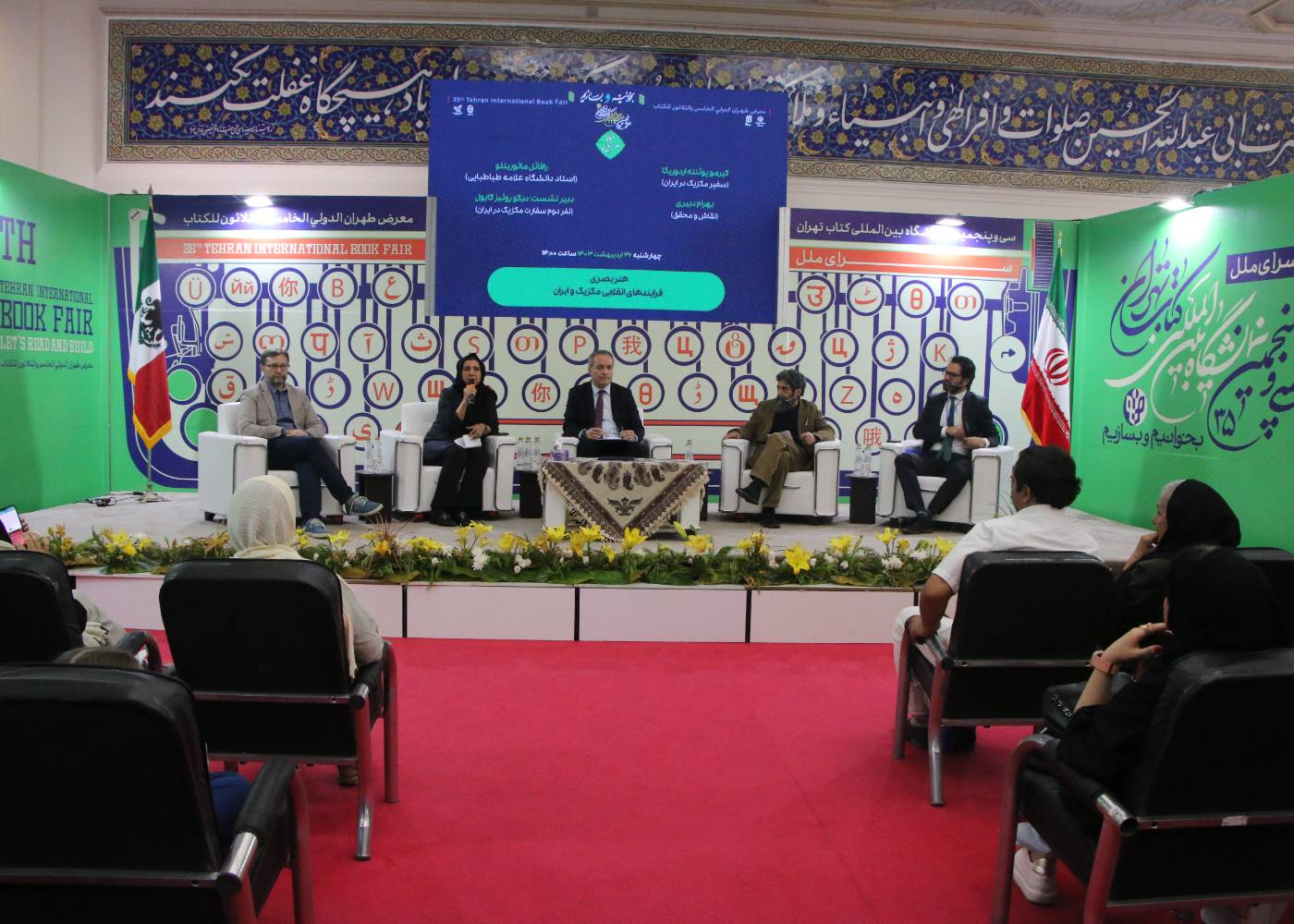
Role of Murals in the Mexican and Iranian Revolutions
1403/02/27-14:30
The role of murals in the Mexican and Iranian revolutions was examined at the "Visual Art (Revolutionary Processes in Mexico and Iran)" session.
According to the news headquarters of the 35th Tehran International Book Fair, the "Visual Art (Revolutionary Processes in Mexico and Iran)" session was held on the eighth day of the fair, on Wednesday, May 16, 2024, with the presence of Guillermo Puente Ordorica (Mexican Ambassador to Iran), Rafael Mauriello (Professor at Allameh Tabataba'i University), and Bahram Dabbiri (painter and researcher) at Saraye Melal.
The Mexican Ambassador highlighted the significant meanings conveyed through Mexican murals, which originated from the Mexican Revolution.
Ordorica said: "The Mexican Revolution had many social aspects, and the oppressed people used murals to achieve their ideals and depict many of the events and ideals of their time."
He pointed out that this art form was also used by Iranian artists during the Islamic Revolution, allowing them to display their work to the public.
The Mexican Ambassador mentioned the only booklet published in Iran that addresses Mexican murals and said: "The book 'Murals and the Mexican Revolution,' translated by Mehdi Sahabi, is the only Iranian translation in this field that provides good information to the audience."
Cultural Commonalities in Literature and Painting
Bahram Dabiri, an Iranian researcher and painter who has left many mural works, highlighted the deep connection between Iranian and Latin American cultures, particularly Mexico, noting: "We have seen many of these commonalities in the fields of literature and painting."
Dabiri emphasized that Iran had a prophet named Mani, who was a painter and conveyed his teachings through large paintings, and said: "After that, large historical and religious iconographies continued and were later renamed 'coffeehouse painting.' Unfortunately, we have not seen much of this narrative painting style in our country for about 50 years."
He referred to the role of murals during the Islamic Revolution, stating: "We believed that painting could have a broad social impact and began painting in the alleyways of the city, which had a significant impact during the Islamic Revolution. Unfortunately, many of those works have been destroyed or erased today."
Decline of Murals After the Revolution
Rafael Mauriello, a professor at Allameh Tabataba'i University, also discussed the role of murals in the Mexican Revolution and added: "After the Mexican Revolution, the government was taken over by cultured individuals who had a great interest in art and painting, leading to the expansion and flourishing of murals. We even see murals by renowned artists in government ministries."
He continued: "However, mural art in Iran declined after the revolution, with many artists retreating to their personal studios and distancing themselves from this field."
The 35th Tehran International Book Fair, under the slogan "We Read, We Build," will be held from May 8 to May 18, 2024, at the Imam Khomeini Mosalla in person and on the ketab.ir platform.



 بازگشت
بازگشت



